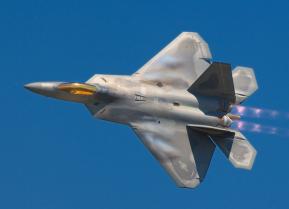About Time: U.S. Air Force Ends Pilot Height Restrictions to Attract More Female Pilots
The Air Force has expressed concern about the lack of diversity with its overwhelmingly white and male pilots. Last year the service reported that about 6 percent of its pilots are women, while 7 percent are minorities.
This month the United States Air Force announced it was removing the minimum height requirement for officer applicants who wished to fly. Previously Air Force pilots were required to have a standing height of 5-feet 4-inches (64-inches) to 6-feet 5-inches (77-inches), and a sitting height of 34 to 40 inches or receive an accession waiver. While most waivers were approved, the previous restriction eliminated approximately 44percent of the U.S. female population between the ages of 20 to 29.
According to the Department of Health and Human Services Anthropometric Reference Data for Adults, United States 2007-2010, the average height for U.S. females aged 20 and over was just 63.8-inches across all ethnic groups, while the average height for U.S. males aged 20 and over was 69.3-inches across all ethnic groups.
Now to encourage a more diverse pool of applicants to pursue careers in aviation the restriction is being removed.
"We're really focused on identifying and eliminating barriers to serve in the Air Force," said Gwendolyn DeFilippi, assistant deputy chief of staff for manpower, personnel and services.
DeFilippi, who is responsible for comprehensive plans and policies covering all life cycles of military and civilian personnel management, is the chairperson of the Department of the Air Force Barrier Analysis Working Group.
"This is a huge win, especially for women and minorities of smaller stature who previously may have assumed they weren’t qualified to join our team," she added.
With the removal of the blanket height standard, the medical and operations communities will apply an anthropometric screening process to individual applicants for placement in an aircraft that the individual can safely fly. The measurements would include not only height but the applicant's eye height while sitting, buttocks-to-knee length and arm span. This could determine which aircraft an applicant could and could not safely fit into.
"Studies have shown that women's perceptions about being fully qualified for a job makes them less likely to apply, even though there is a waiver option," said Lt. Col. Jessica Ruttenber, Air Force mobility planner and programmer and team leader on the Women's Initiative Team who led the height standards adjustment effort. "Modifying the height standard allows the Air Force to accommodate a larger and more diverse rated applicant pool within existing aircraft constraints."
The question will be whether the aircraft design will also require modifications. As CNN reported, historically, most of the Air Force's aircraft have been engineered for the height of an average man. What could also be an issue, Air Force Times reported, is that the age of the fleet of aircraft could be a significant factor. Many of the Air Force's planes were designed decades ago when women weren't even allowed to fly in the service – and as a result most were designed for the average height of men.
However, the automotive world has long had to accommodate drivers of different heights and builds, so perhaps minor adjustments should resolve most issues.
"While most height waivers were approved under the old system, feedback indicated the entire waiver process served as a barrier, which negatively impacted female rated accessions," said Lt. Col. Christianne Opresko, branch chief on the Air Force's Air Crew Task Force and an aerospace physiologist. "It's hard to determine how many women did not previously apply due to their perception of not being fully qualified or having to pursue a waiver."
The Air Force has expressed concern about the lack of diversity with its overwhelmingly white and male pilots. Last year the service reported that about 6 percent of its pilots are women, while 7 percent are minorities.
Peter Suciu is a Michigan-based writer who has contributed to more than four dozen magazines, newspapers and websites. He is the author of several books on military headgear including A Gallery of Military Headdress, which is available on Amazon.com.


